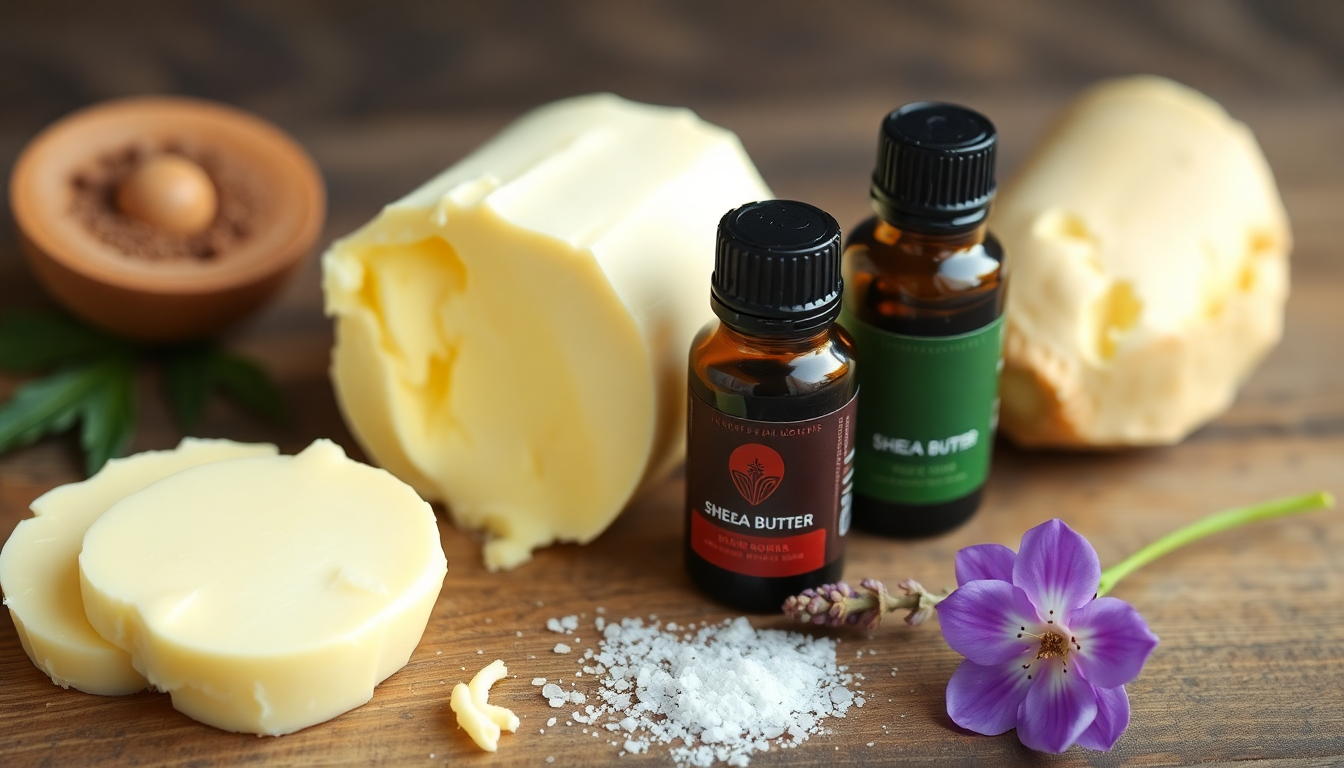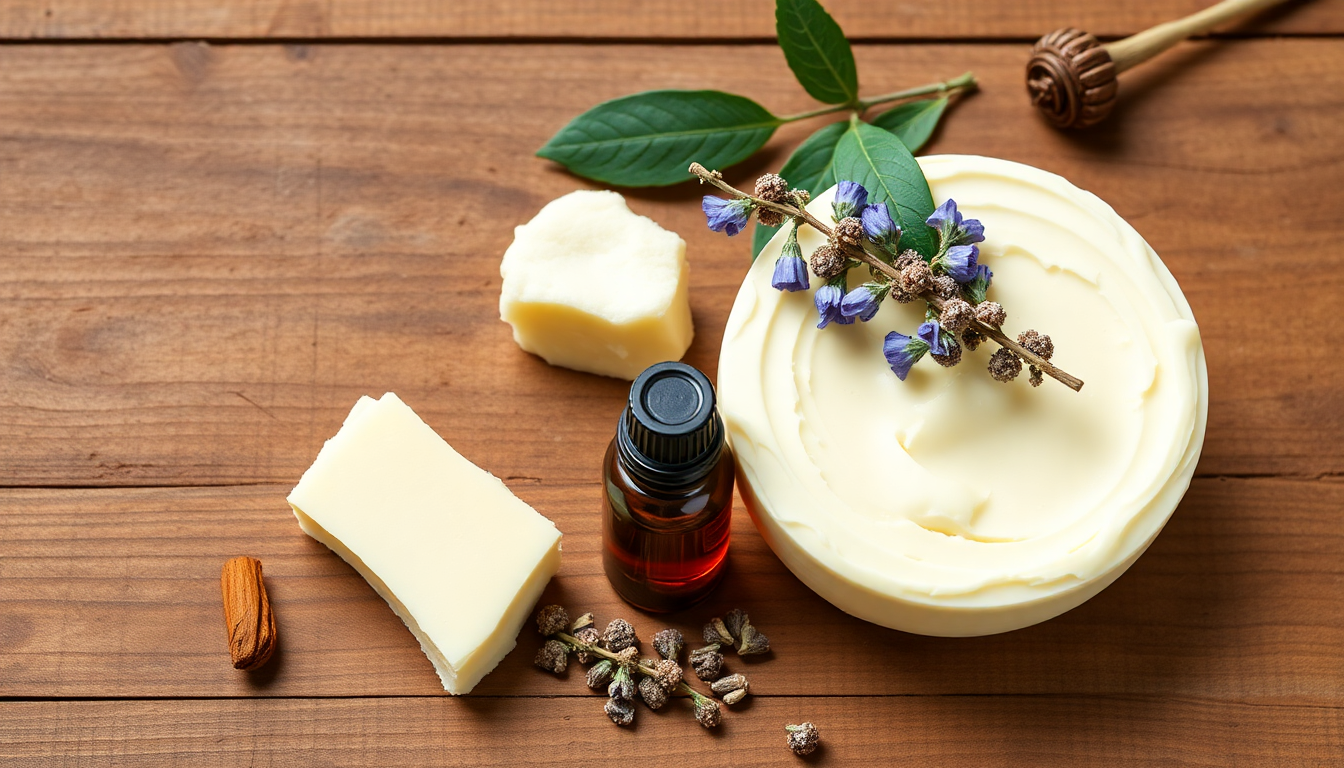Introduction
In the ever-evolving world of skincare, 2025 brings exciting advancements that cater to our desire for radiant skin. One of the key elements of any effective skincare routine is exfoliation. When combined with the nourishing properties of organic shea butter and the therapeutic benefits of essential oils, exfoliation can transform your skin into a canvas of beauty. This article delves deeply into advanced exfoliation techniques that will elevate your skincare ritual and leave your skin glowing.
Why Exfoliation is Essential
Exfoliation is the process of removing dead skin cells from the surface of your skin. This practice is crucial for several reasons:
- Promotes Cell Turnover: As we age, the natural process of shedding dead skin slows down, leading to dullness. Regular exfoliation promotes cell turnover, revealing fresh, vibrant skin underneath.
- Enhances Product Absorption: Exfoliating helps to clear away the barrier of dead skin, allowing your serums, moisturizers, and treatments to penetrate deeper and work more effectively.
- Improves Skin Texture: By smoothing away rough patches and uneven skin, exfoliation helps reduce the appearance of fine lines, wrinkles, and other imperfections.
- Prevents Clogged Pores: Regular exfoliation prevents the buildup of dead skin cells, oil, and impurities that can lead to breakouts and acne.
- Boosts Circulation: The physical action of exfoliating can stimulate blood flow, giving your skin a healthy and radiant appearance.
The Benefits of Organic Shea Butter
Organic shea butter is a powerhouse ingredient in skincare, cherished for its myriad benefits. Its rich, creamy texture makes it a favorite for both moisturization and exfoliation. Here are some of the benefits of incorporating shea butter into your skincare routine:
- Nourishing Vitamins: Shea butter is rich in vitamins A, E, and F, which nourish and protect the skin, making it look youthful and vibrant.
- Deep Hydration: Its emollient properties provide deep hydration without clogging pores, making it suitable for all skin types, including oily and combination skin.
- Anti-inflammatory Properties: Shea butter contains natural anti-inflammatory compounds, which can soothe irritated skin, making it ideal for conditions like eczema or psoriasis.
- Sun Protection: While it shouldn't replace sunscreen, shea butter offers a degree of UV protection, helping to shield your skin from harmful sun rays.
- Healing Qualities: The healing properties of shea butter can reduce the appearance of scars and stretch marks, promoting a more even skin tone.
Essential Oils: Nature's Aromatherapy
Integrating essential oils into your exfoliation routine can enhance both the sensory experience and the effectiveness of your skincare. Essential oils not only add delightful fragrances but also bring various therapeutic benefits. Here are some popular essential oils to consider:
- Lavender: Known for its calming properties, lavender oil helps reduce redness and promotes healing. Its soothing scent makes it perfect for relaxation.
- Tea Tree: This powerful oil is perfect for acne-prone skin due to its antibacterial properties. It helps to reduce inflammation and prevent future breakouts.
- Frankincense: Renowned for its anti-aging benefits, frankincense oil helps improve skin elasticity, giving it a firmer appearance.
- Rosemary: An invigorating oil that boosts circulation and revitalizes dull skin. It also has antimicrobial properties that can benefit oily skin.
- Geranium: This essential oil helps balance oil production and promotes an even skin tone, making it ideal for combination skin types.
Advanced Exfoliation Techniques
To maximize the benefits of exfoliation with organic shea butter and essential oils, consider the following advanced techniques that cater to various skin types and concerns:
1. Sugar and Shea Butter Scrub
Create a natural scrub by mixing organic cane sugar with melted shea butter and a few drops of your favorite essential oil. The sugar acts as a gentle abrasive, while shea butter hydrates the skin. Gently massage the mixture onto damp skin in circular motions, focusing on rough areas such as elbows and knees. Rinse off thoroughly to reveal smoother, softer skin.
2. Coffee and Shea Exfoliating Mask
Combine brewed coffee grounds with shea butter and a few drops of essential oil for an invigorating mask. The caffeine in coffee can help reduce puffiness and stimulate circulation. Apply it to your face, leave it on for 10-15 minutes, and then rinse. This technique not only exfoliates but also enhances circulation, giving your skin a radiant glow.
3. DIY Exfoliating Body Wash
Mix liquid castile soap with shea butter, almond oil, and finely ground oatmeal to create a luxurious body wash. The oatmeal provides gentle exfoliation while the shea butter and almond oil hydrate your skin. Add essential oils for fragrance and additional skin benefits. Use this wash in the shower for a gentle exfoliation experience that leaves your skin feeling soft and refreshed.
4. Gentle Peeling Gels with Shea Butter
For a more advanced technique, consider making a gentle peeling gel using organic shea butter, aloe vera gel, and fruit enzymes. This combination can effectively dissolve dead skin cells without harsh abrasives. Apply the gel to your face, let it sit for a few minutes, and then rinse off. This method is excellent for sensitive skin types seeking an exfoliation without irritation.
5. Exfoliating Overnight Mask
Create an overnight mask by blending shea butter with a few drops of essential oils like lavender or chamomile. Apply a thin layer to your face before bedtime. The shea butter will hydrate your skin while you sleep, and the essential oils will work to soothe and rejuvenate your skin while you rest.
Tips for Effective Exfoliation
- Know Your Skin Type: Understanding your skin type (oily, dry, sensitive, or combination) will help you choose the right exfoliation method and frequency.
- Frequency of Exfoliation: Exfoliate 1-3 times a week depending on your skin type. Sensitive skin may require less frequent exfoliation.
- Follow Up with Moisturizer: Always follow exfoliation with a hydrating moisturizer to lock in moisture and protect the skin barrier.
- Patch Test New Ingredients: When trying new essential oils or exfoliation products, perform a patch test to avoid allergic reactions.
- Sunscreen is a Must: After exfoliating, your skin may be more sensitive to the sun. Always apply sunscreen during the day to protect your freshly exfoliated skin.
Common Exfoliation Mistakes to Avoid
Even with the best intentions, many people make common mistakes in their exfoliation routines. Here are some pitfalls to avoid:
- Over-exfoliating: Too much exfoliation can strip the skin of its natural oils, leading to irritation and sensitivity. Stick to a consistent routine that suits your skin type.
- Using Harsh Scrubs: Avoid scrubs with large, jagged particles that can cause micro-tears in the skin. Opt for gentle, natural exfoliants.
- Neglecting Hydration: Failing to hydrate after exfoliation can leave your skin feeling tight and dry. Always follow up with a nourishing moisturizer.
- Ignoring Skin Changes: Pay attention to how your skin responds to exfoliation. If you experience redness or irritation, adjust your routine accordingly.
Conclusion
Elevating your skincare ritual with advanced exfoliation techniques using organic shea butter and essential oils can lead to radiant, healthy skin. As we embrace 2025, prioritize your skincare routine by incorporating these natural ingredients and practices into your regimen. With consistent care and attention, your skin will thank you with a luminous glow. Remember, every individual's skin is unique, so take the time to find the right combination of techniques and products that work best for you. Here's to your journey towards radiant skin!




Dejar un comentario
Este sitio está protegido por hCaptcha y se aplican la Política de privacidad de hCaptcha y los Términos del servicio.